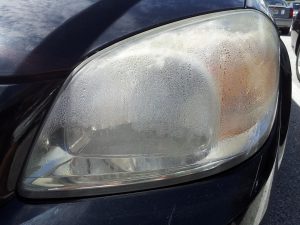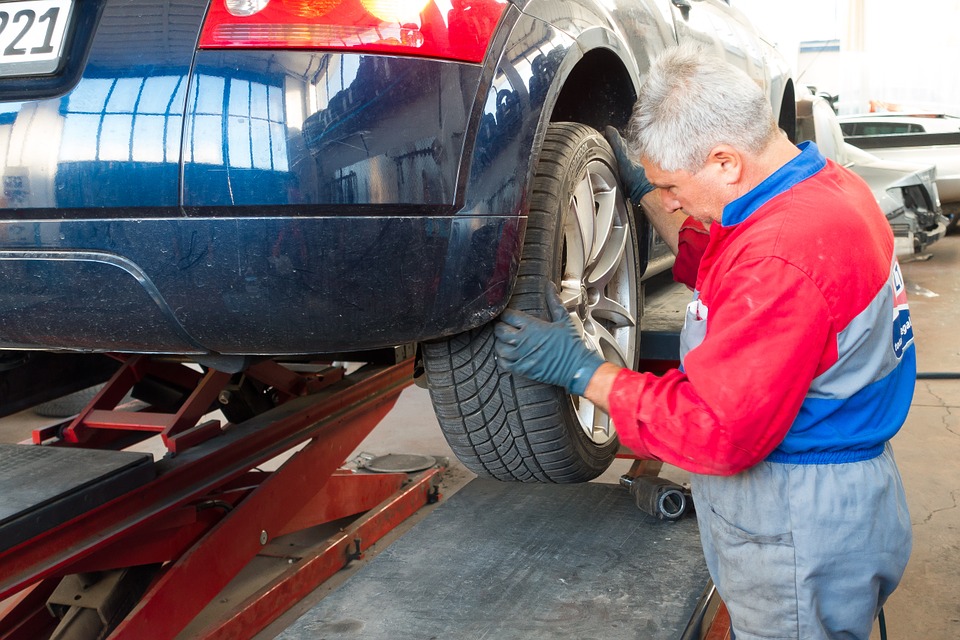
Flood Damaged Vehicles are considered, vehicles that were harmed by the water level being raised to seating level. Most flood damaged cars, suvs and trucks are sent to a salvage area, however some are tidied up and taken directly into the market where they will be purchased by unsuspecting customers who think they are getting a great deal. Flood water can leave quite a bit of unseen damage on a vehicle. When it is time to get into a new vehicle be on the lookout for these cars even if you do not live in an area where it floods often, because dishonest individuals move them around. Here are some tips and suggestions to help you spot a vehicle with flood damage.
•Get a Vehicle History Report•
There are a number of websites and resources that allow you to enter the vehicle’s VIN number to get a history report. Carfax does a great job of investigating a vehicle’s background, but a clean slate is not a 100 % assurance that the vehicle or truck has not suffered water damage.

•Look for Moisture•
Search for moisture within the lights. Inspect the glove console, compartment and trunk and inspect them for any indication of wetness, moisture or dirt that appears to be a leftover from a flood. Look under the hood for accumulated dirt or indications of rust or rot. Check under the seats for signs of wetness. Check the wheel wells for signs of rust or rot.
•Have a Sniff•
This can truly assist in spotting flooded cars. Do you smell a sour, mildew-like smell? Drenched seats, carpeting and other components are hard to dry in a hurry, so there is more than enough time for mold and mildew to grow, especially if the flood occurred in a hot and humid place.
•Look for Mismatched Interior Components•
Does the carpeting have a different brand name or is it even too new-looking for the vehicle? Do the seat covers match the carpeting? Elements that do not match up may have been changed out after the vehicle was removed from the flood waters.

•Let Your Technician Have a Look•
Skilled auto professionals see proof of flood damage, on average, more than the majority of individuals do, so they know precisely what to look for. If you want to be sure you are not buying a flood damaged vehicle you may want to bring it to multiple technicians before finalizing your purchase.
•Turn it On and Go for a Drive•
The vehicle is being sold because it is deemed safe for the road, so jump into it and get testing! Turn the vehicle on and inspect as many electrical systems as you can. Some of these systems include the outside and interior lights, the clock(s), the audio system, and of course the dash lights that display safety and maintenance information. Test these components a few more times to be completely sure they are all working as intended. Most vehicles that have suffered from flood damage will have at least a few electrical components that will need to be repaired or have been replaced already. It is very unusual for a vehicle that has suffered flood damage to have all the electrical systems working and no signs of flood damage.
Flood damaged vehicles only supply trouble. If you suspect a vehicle has flood damage leave it. Even if the dealer or car seller assures you there is no flood damage be sure to check for yourself.
TL;DR
•Parts that do not match-up might have been changed in a rush after the car was pulled from flood waters.
•90 % of the time you will be able to find an electrical issue with a flooded vehicle unless it has been repaired or the electrical parts were not harmed, which is extremely uncommon.
•Flooded vehicles should be avoided at all costs. Only issues will arise, unless you are looking to perform a restoration. If you need assistance identifying a flood damaged vehicle be sure to reach out to your service technician.
Like us on Facebook
Follow us on Twitter
Add us to your circle on Google+
Follow us on Instagram
Visit our website
